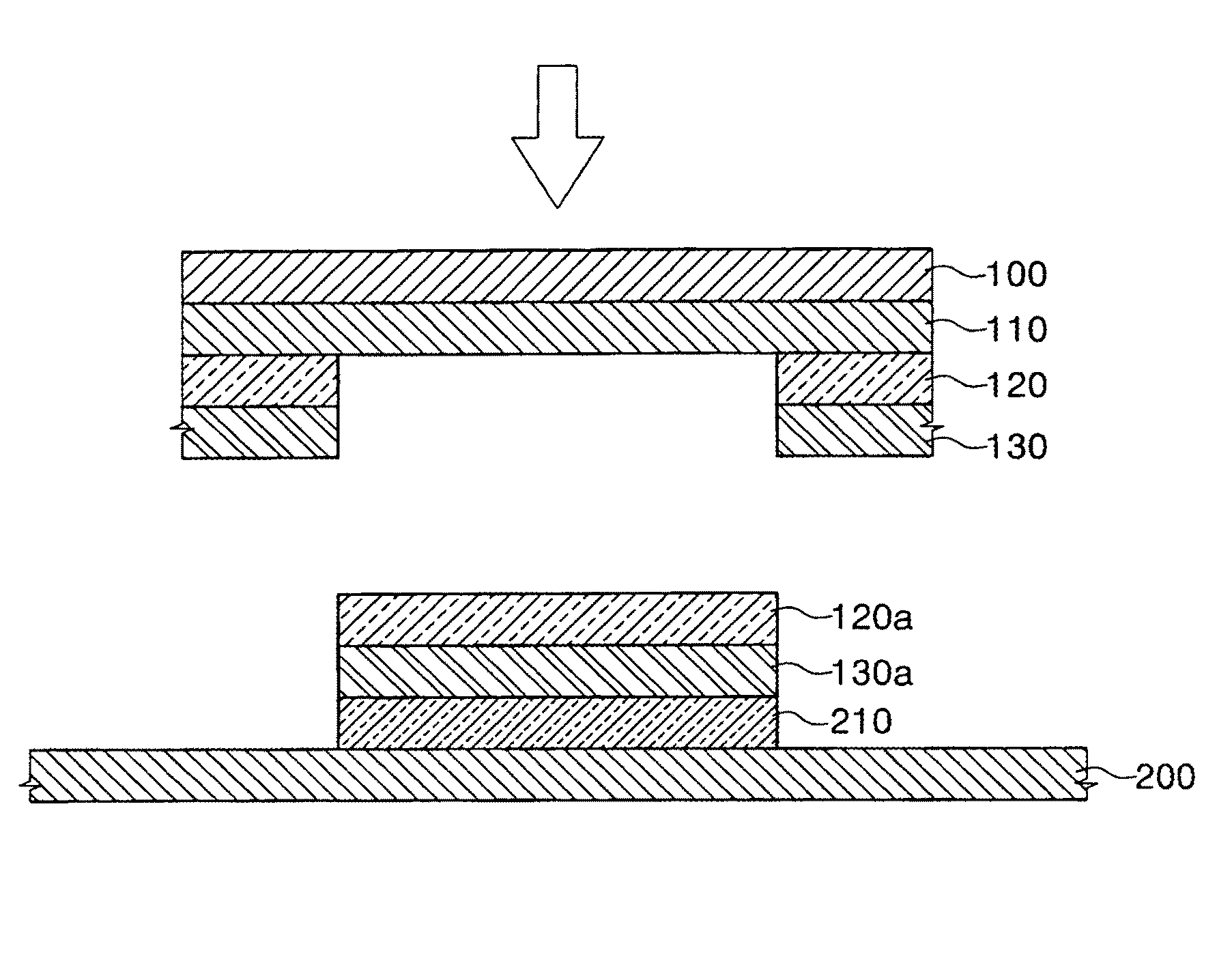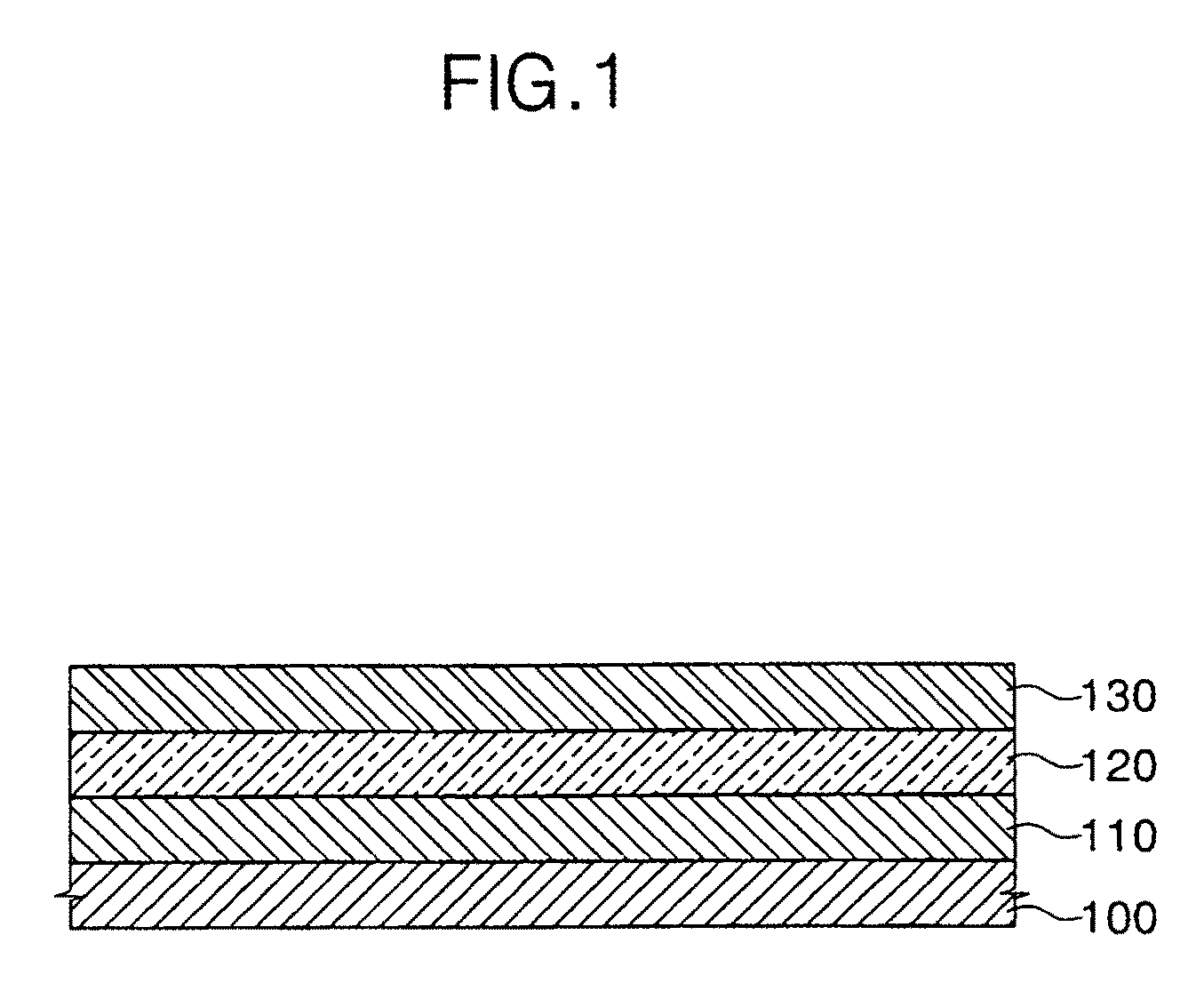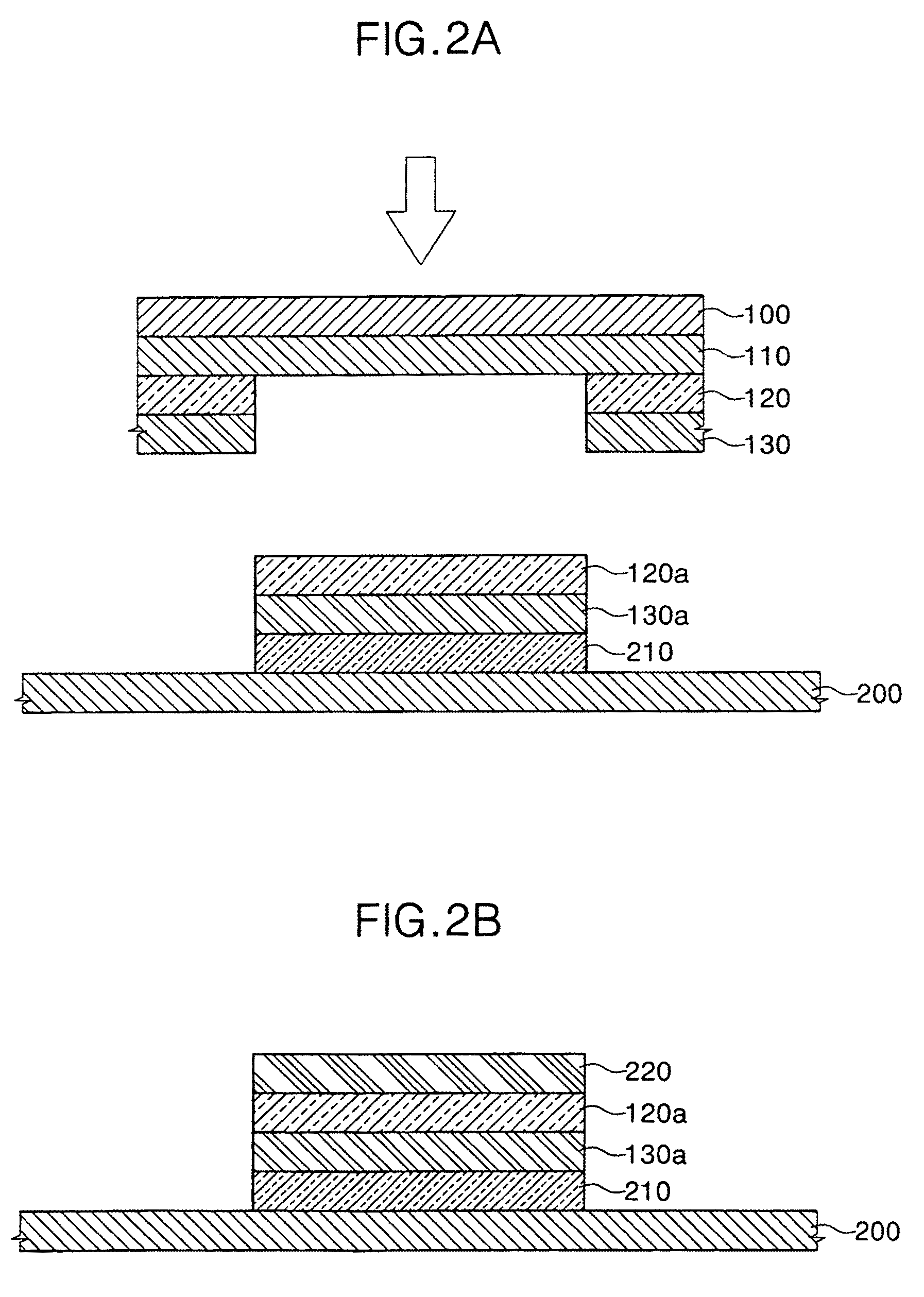Donor substrate for laser induced thermal imaging and method of fabricating organic light emitting diode using the same
a technology of laser induced thermal imaging and donor substrate, which is applied in the direction of thermography, printing, other printing apparatuses, etc., can solve the problems of deterioration of luminous efficiency and lifetime, difficult manufacture and difficult manufacturing of perfect full color displays
- Summary
- Abstract
- Description
- Claims
- Application Information
AI Technical Summary
Benefits of technology
Problems solved by technology
Method used
Image
Examples
experimental example
[0054]A base layer was formed of polyethylene terephthalate, and a light-to-heat conversion layer including carbon black as a light absorbing material was formed on the base layer. A first transfer layer was formed of TC1558 (manufactured by Tetrahedron, LUMO: 2.93 eV; band gap energy: 2.96 eV) to a thickness of 50 Å on the light-to-heat conversion layer. A green emission layer including GGH01 (manufactured by Gracel) as a host material and GGD01 (manufactured by Gracel) as a dopant material was formed to a thickness of 200 Å on the light-to-heat conversion layer. A first hole transport layer was formed of NPB to a thickness of 300 Å on the green emission layer, thus preparing a donor substrate including a second transfer layer having the emission layer.
[0055]A first electrode was formed of ITO on a glass substrate, and a hole injection layer was formed of IDE-406 (manufactured by Idemitsu) on the first electrode. Subsequently, a second hole transport layer was formed of NPB on the ...
PUM
| Property | Measurement | Unit |
|---|---|---|
| band gap energy | aaaaa | aaaaa |
| band gap energy | aaaaa | aaaaa |
| band gap energy | aaaaa | aaaaa |
Abstract
Description
Claims
Application Information
 Login to View More
Login to View More - R&D
- Intellectual Property
- Life Sciences
- Materials
- Tech Scout
- Unparalleled Data Quality
- Higher Quality Content
- 60% Fewer Hallucinations
Browse by: Latest US Patents, China's latest patents, Technical Efficacy Thesaurus, Application Domain, Technology Topic, Popular Technical Reports.
© 2025 PatSnap. All rights reserved.Legal|Privacy policy|Modern Slavery Act Transparency Statement|Sitemap|About US| Contact US: help@patsnap.com



